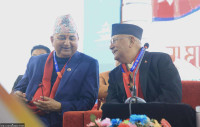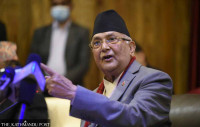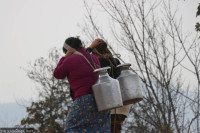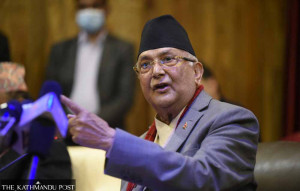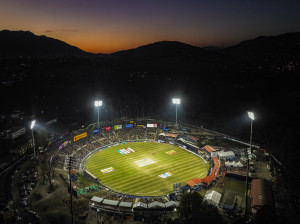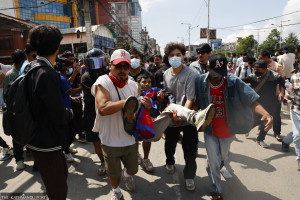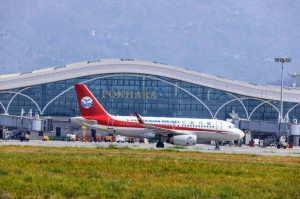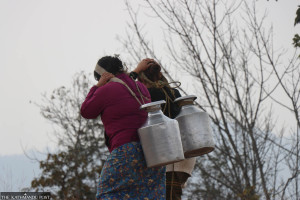Editorial
New regionalism
A major point of interest arising from the bilateral talks between Prime Minister KP Sharma Oli and Pakistan prime minister Shahid Khaquan Abbasi, who completed a two-day visit to Nepal yesterday,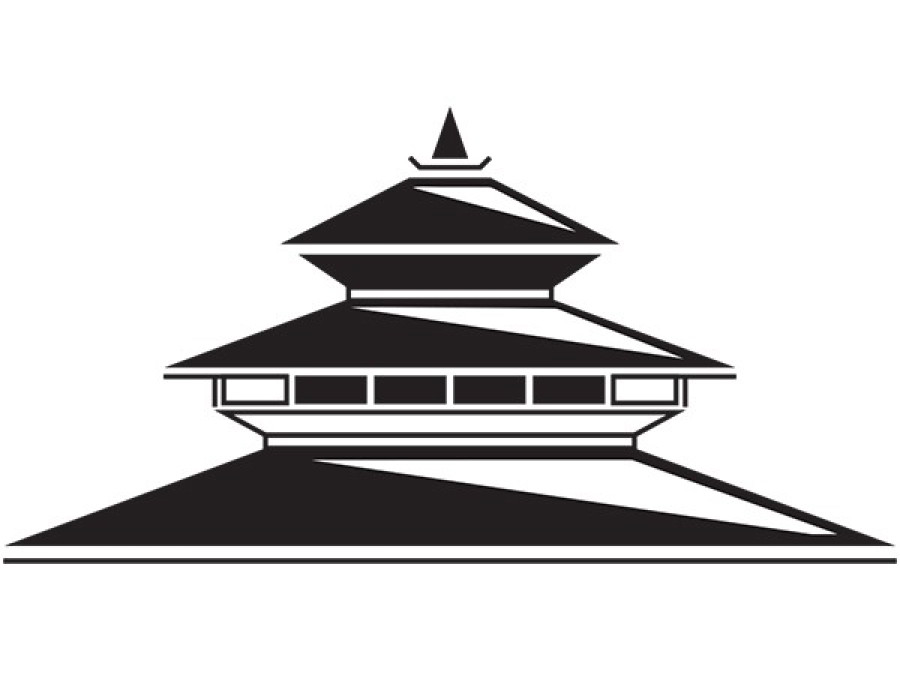
A major point of interest arising from the bilateral talks between Prime Minister KP Sharma Oli and Pakistan prime minister Shahid Khaquan Abbasi, who completed a two-day visit to Nepal yesterday, is a focus on reviving the stalled South Asian Association for Regional Cooperation (Saarc) process. But the turn of events also indicate at the larger churning of regional dynamics with the rise of China.
Pakistan was to hold the 19th Saarc summit in Islamabad in November 2016, with Nepal as the Chair, but the summit was jeopardised due to India’s decision to not participate. India was supported by Afghanistan, Bangladesh and Bhutan, which led to the meeting’s cancellation. It would be natural for Pakistan and Nepal, then, to restart talks of the summit in a bid to take things up where they were left off a year and a half ago. The two countries surely would not want the Saarc chapter to go cold during their stewardship. However, the ease with which the 19th summit was cancelled tells a bigger story: The regional grouping has failed to take off even more than three decades after its founding.
Saarc, a regional grouping currently consisting of eight member states, was founded in 1985 to promote and strengthen regional cooperation in economic and cultural matters—among others—and to build mutual trust. South Asia comprises of 21 percent of the world’s population and contributes to around 4 percent ($2.9 trillion) of the global GDP. While Saarc’s overall global trade has risen, the total contribution of intra-regional trade has been minimal, with trade among member countries accounting for less than 5.5 percent of the grouping’s total GDP in 2016. This is in stark contrast to another grouping in the neighbourhood, the Association of Southeast Asian Nations (Asean), whose intra-member trade accounts to over 24 percent of its overall GDP (its GDP currently amounts to $2.5 trillion). Both groupings have similar contributions to the global GDP, and both have instituted frameworks to increase and support intra-regional trade. Why the difference then?
While numerous explanations may be given to explain such a discrepancy, one of the major reasons is that the South Asian Free Trade Agreement (Safta) signed by Saarc nations is severely debilitating. Although the Safta was designed to promote trade among member nations, it has provisions for every country to hold “sensitive lists” that allow each member to essentially use protectionist barriers to safeguard certain goods. This goes against the very principle of free trade, and such provisions are used to cultivate tariff and non-tariff barriers that eventually hamper member nations. Provisions for protectionist measures in Safta and the cancellation of the Pakistan summit points to one glaring failure in Saarc’s mission: the inability to strengthen mutual trust.
Saarc also differs from Asean in that one country—India—accounts for an asymmetrical proportion of South Asia’s population, land mass, and GDP (at 75 percent, 62 percent and 83 percent respectively). And India’s support for two new regional groupings that exclude Pakistan, the Bangladesh, Bhutan, India, Nepal (BBIN) Initiative and the Bay of Bengal Initiative for Multi-Sectoral Technical and Economic Cooperation (Bimstec) naturally makes Pakistan insecure and isolated.
One also cannot discount China’s growing presence in South Asia. Enjoying an observer status within Saarc since 2005, China has not only become closer to Pakistan in recent times but has also moved to strengthen economic and political ties with Sri Lanka, Maldives, Bangladesh, and not least with Nepal.
Furthermore, Saarc’s very charter states that “bilateral and contentious issues are excluded from the deliberations of the Association.” This is a major problem, and Saarc can never hope to benefit its member states if contentions between members cannot even be discussed in the group’s official meetings. And at a time when other regional groupings show more promise in delivering increased cooperation and trade in South Asia, Saarc will do well to internalise the evolving shift in the regional power balance and work to reset itself in this new dynamic.




 10.12°C Kathmandu
10.12°C Kathmandu
